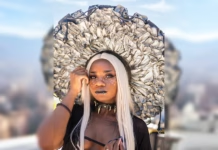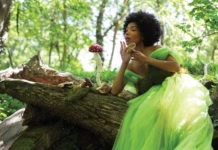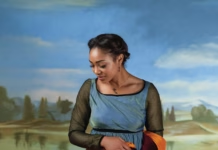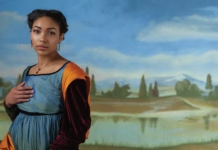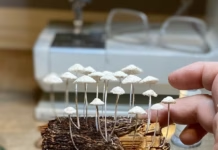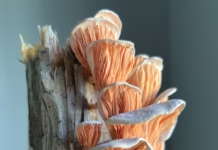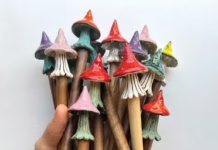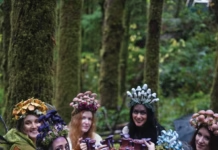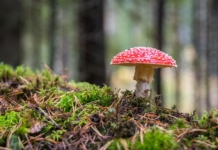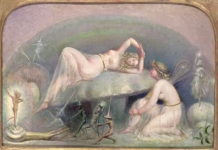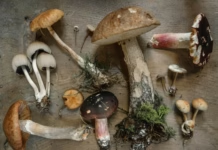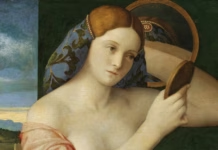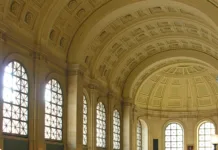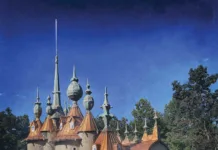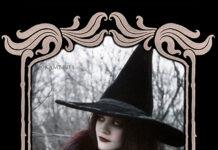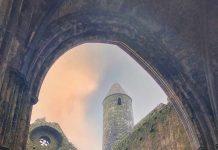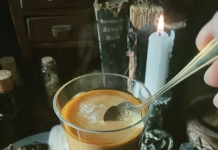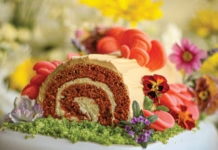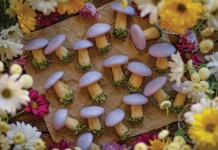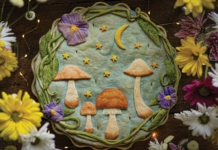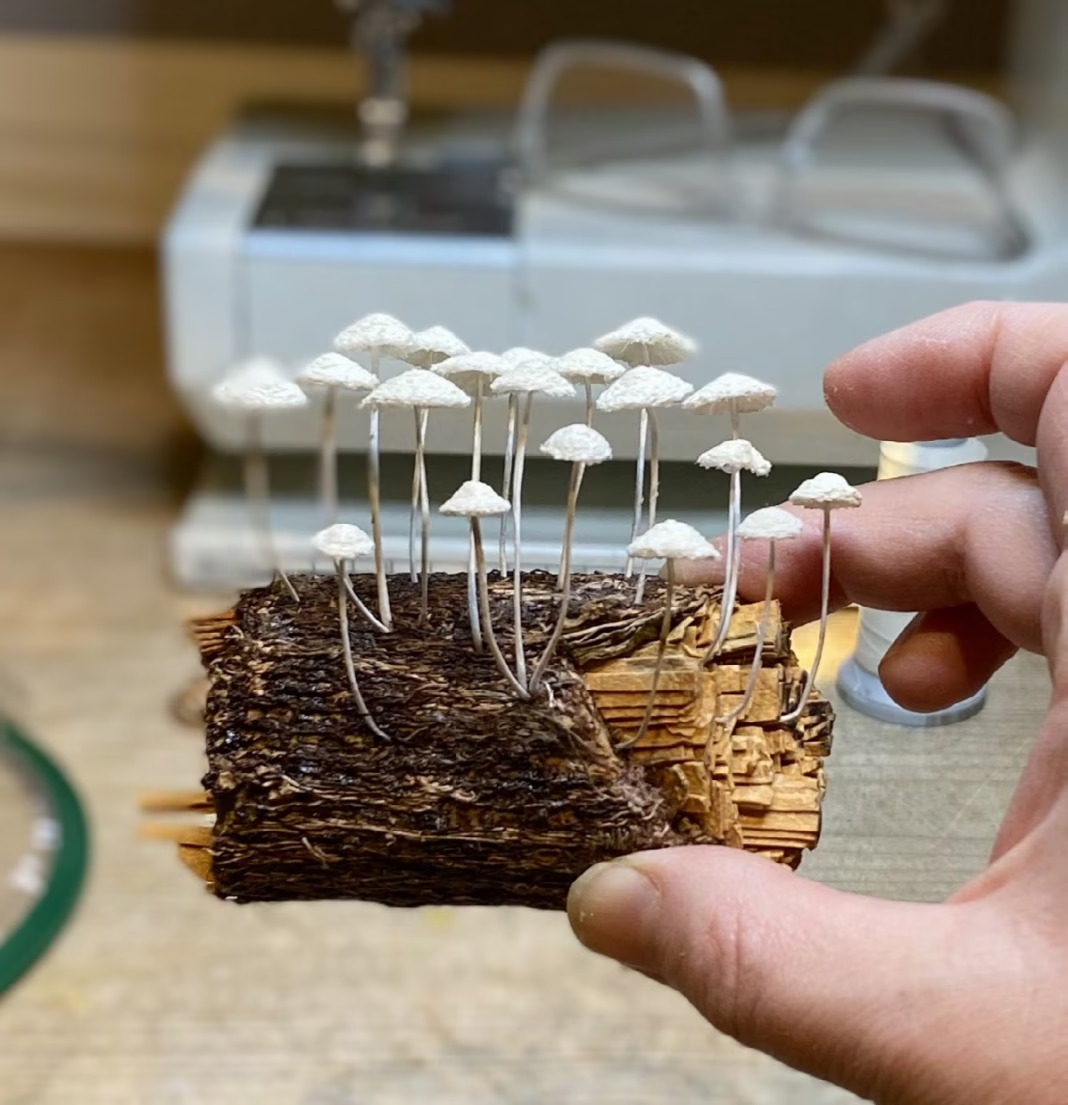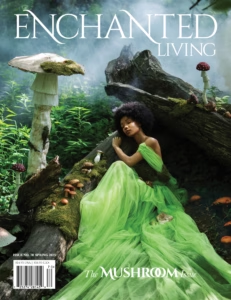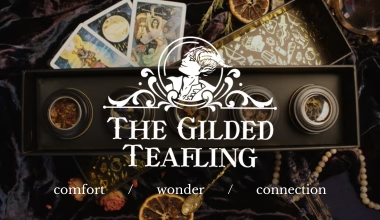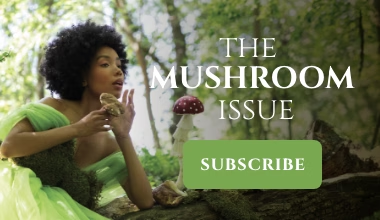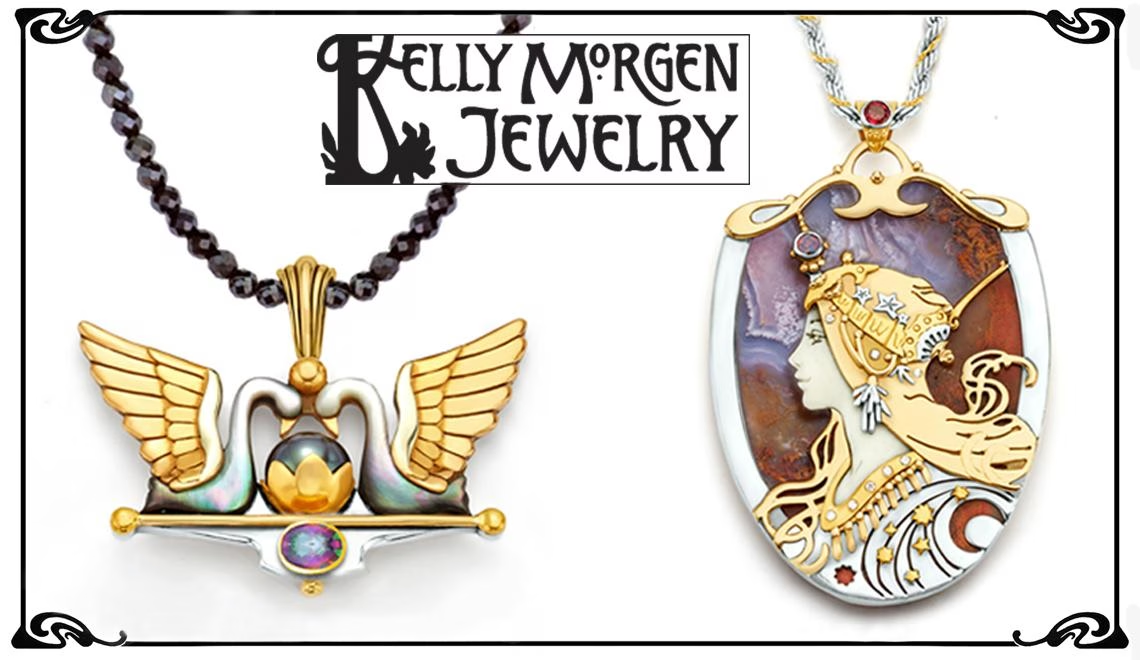Picture them under glass: four small pieces of bark vered from left to right with the delicate white fungi udoniella acicularis, which is found on rotting logs; the feather moss Eurhynchium straitum, common throughout the wood; the cup-shaped blue fungus Chlorospenium aeruginascens; and in clusters of orange discs, the Anthracobia macrocystis—all gorgeous scientific specimens, carefully collected as if straight from the forest floor. Except these are made from … silk and thread? Thousands of miles of thread to be exact, and no small amount of enchantment.
Fiber artist Amanda Cobbett had been working for more than a decade designing textiles when she found herself wanting to sculpt and make three-dimensional art—both of which she’d done in school—once more. She also wanted to find a way to preserve the objects she foraged during the long walks she’d take with her dogs and children through the forest near her home in Surrey, England. A family friend had given her an old Bernina sewing machine, and she started experimenting. When her children’s school needed cakes for a fundraiser, she thought maybe she’d embroider replicas of her forest finds instead, just to see. They sold out. When she made more for the Chelsea Flower Show, they sold out too.
As she continued to experiment, dissolvable fabric was a huge revelation. She put it into an embroiderer’s hoop and used her machine to build up layers of thread. She discovered that when she washed away the carrier fabric, the embroidered thread that remained created a new textile she could use in her sculptural pieces. Using other materials as well, she developed new techniques for replicating what she saw in nature: She made papier-mâché stems for the fungi and covered them with fine silk, then embellished them with sewing, markers, and burning techniques.
Currently, she’s exploring and then replicating in thread the fungi and lichens on the various estates belonging to a duke in Scotland. She has a long waiting list of future commissions. And she won’t be bored anytime soon. “Different threads behave differently when put together, so the possibilities are endless,” she says. There’s always a new discovery on the horizon—or underfoot: “We’re naturally inclined to look at the bigger picture, but then we risk missing the tiny details that can be found all around us.”
See more of Amanda Cobbett’s work at amandacobbett.com or on Instagram @amandacobbett.




